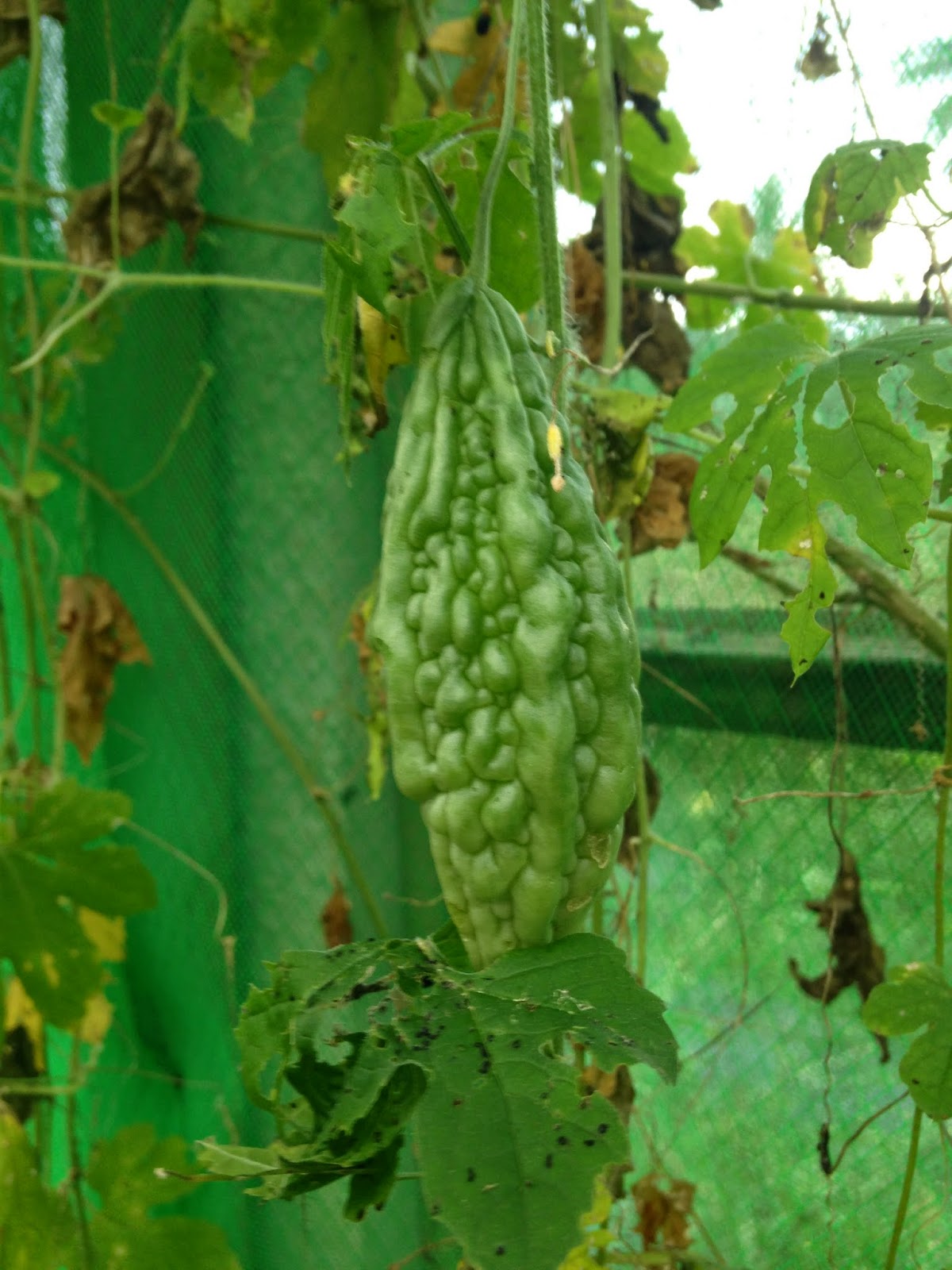SHL Trellis Adventure Part 2 – Pumpkins
 I have tried planting pumpkins with and without trellis and find that the fruits are better when they grow on a trellis. So December 2014, I seeded various types of pumpkin seeds. Previously, I had
I have tried planting pumpkins with and without trellis and find that the fruits are better when they grow on a trellis. So December 2014, I seeded various types of pumpkin seeds. Previously, I had
bought commercial seeds and they didn’t have a good sprouting rate, about 50%. This time around, I bought 4 different varieties of organic pumpkin – I prefer speckled pumpkins – and then selected the good-sized, fat seeds and placed them in a colander to dry. The skinny seeds do not sprout since they do not have enough “meat” to start a plant. I had tried drying them on newspaper and it ended with them getting stuck on the newspaper. I store the excess dried seeds wrapped in a newspaper in a dry, cool area.
 I sow the seeds in small polybags, about 9 cm across, filled with a soil mixture containing soil,
I sow the seeds in small polybags, about 9 cm across, filled with a soil mixture containing soil,
organic matter and fertilizer and place them in a sunny location. I water them everyday, taking care not to have the soil too wet and never letting them dry out. The seeds sprout in 5-7 days. Two “baby leaves” will appear first before the normal shaped leaves will appear which looks very different from the baby leaves. After the third normal leaf has appeared, I will transplant them into the ground. After 1 week, I will fertilise it with about 1 teaspoon of organic fertiliser. I find that the “trailers” will start to appear after about 2 weeks and the plant will start to climb up the trellis. By having them grow on a trellis also helps me control the spread of the plant and enables me to easily spot the pumpkins as well as keeping it away from the ground pest and keeping it clean.
 This time around, I changed the design of the trellis from the x-shape to a platform-style trellis. This design helps to support the fruit, which can weigh over 1 kg. It also provides for a wider area for the plant to creep along and provides me easier access when I need to do plant maintenance. The plants love full sunlight and the leaves tend to slightly wilt during the peak hot afternoon but will perk-up as the heat eases off.
This time around, I changed the design of the trellis from the x-shape to a platform-style trellis. This design helps to support the fruit, which can weigh over 1 kg. It also provides for a wider area for the plant to creep along and provides me easier access when I need to do plant maintenance. The plants love full sunlight and the leaves tend to slightly wilt during the peak hot afternoon but will perk-up as the heat eases off.
I will remove any old or yellowed leaves
whenever I spot it as well as any leave that covers-up a flower. The aim is to provide easy access for the insects to pollinate. Removing these leaves also encourages growth. Fruits will also result from pollinated flowers hence it is important to increase the chances of pollination for the flowers. All 4 types of pumpkin produce a beautiful, bright yellow flower. Any flower that does not produce a flower will drop off, still in good shape. I will collect these flowers and cook them – they are edible.
The fruit are ready for harvest when the white area of the speckled skin has turned into an off-white colour with a slight brown tinge. These pumpkins can be cooked in many ways either as a sweet or savoury dish. A simple way to prepare pumpkin is to slice them to about 0.5cm thickness, and coat it with olive oil, salt and pepper and grill or bake them. Simply delicious. You can do more complex dishes like masak lemak labu dengan udang, pengat labu and even pumpkin pie. The young pumpkin leaves and shoots can also be used to cook in savoury dishes. I like to eat the pumpkin for its many benefits including the high content of anti-oxidants, vitamins such as A, C and E, whilst containing no saturated fats or cholesterol. It is also rich in the vitamin Bs. All in all, something good to eat 🙂










































